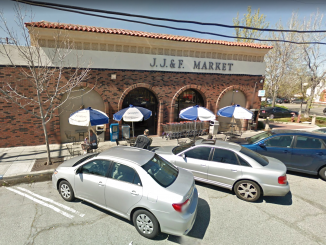
BY ELAINE GOODMAN
Daily Post Correspondent
The city of Palo Alto is looking to iron out some wrinkles in an ordinance passed last year aimed at encouraging construction of granny units on the same lots as single family homes.
With approval of the ordinance, which took effect on June 8, applications to build granny units have been pouring in. Before 2017, the city approved an average of four granny units per year. From the beginning of 2017 through mid-December, the city had approved nine permits for the units, which the city refers to as Accessory Dwelling Units or ADUs. Another 14 applications were under review.
But questions have cropped up in that time. Can granny units be built in front of a home? Can they have basements? And if someone building a new home wants to include a granny unit as part of the project, are they entitled to bonus square footage that is sometimes available for granny units built next to existing homes?
Those are issues the city’s Planning and Transportation Commission will discuss during a study session on Accessory Dwelling Units on Jan. 10.
The granny units, which are sometimes referred to as in-law units or backyard cottages, are seen as a way to increase housing supply as the Bay Area housing crisis intensifies. Proponents say the units may provide additional income for retired homeowners, housing for the disabled or a place for those who grew up in Palo Alto but now can’t afford to live there.
State loosens requirements
But in a series of City Council hearings last spring, residents also expressed concerns about the units changing the character of single-family neighborhoods and adding to parking and traffic problems.
The council’s approval in May of an Accessory Dwelling Unit ordinance followed a state law that took effect Jan. 1, 2017, that loosened requirements for building granny units. Cities may adopt their own ADU ordinances as long as they’re consistent with the state law. For example, the state law says a maximum of one parking space can be required for a granny unit; Palo Alto’s ordinance doesn’t require any additional parking when a granny unit is built.
Under Palo Alto’s ordinance, a single-family lot must be at least 5,000 square feet in order for a granny unit to be built. The maximum size for a detached unit is 900 square feet; for a unit attached to the main home, the maximum is 600 square feet.
‘Junior ADU’
There’s also a unit called a “junior ADU,” which is 500 square feet or smaller and contained entirely within a single-family home. The junior unit may have its own bathroom, or share a bathroom with the main home. The city hadn’t received any applications for junior ADUs as of mid-December.
In addition to the surge in granny-unit applications, city planners are receiving a slew of questions about the accessory units. And the city’s current ordinance doesn’t address certain issues, such as granny-unit basements.
“The current ADU code is clear that an ADU may be located in the basement level of the primary home, but it is less clear about allowing a basement as part of a ground-floor ADU unit,” according to a report to the Planning and Transportation Commission from Planning Director Hillary Gitelman.
What about the backyard?
The ordinance is also a bit fuzzy about whether a granny unit built behind a home can take up more than half of the backyard — a limit that applies to accessory structures such as sheds. And if the unit is replacing a garage or accessory structure that doesn’t comply with setback requirements, must the new granny unit meet the setback requirements?
The city ordinance says that an accessory unit attached to the main home must have its entrance on a different face of the building than the main home’s entrance. But what if someone wants to build the granny unit in front of the main house, as was recently proposed? That’s something the ordinance “does not adequately address,” the report said.
Other issues are whether there’s a way to make the units available to residents with low or moderate incomes. And how can illegally built granny units be brought into compliance with city code?
The report also asks the commission whether an owner occupancy requirement should be revisited. The current city ordinance requires the owner to live in either the main house or the granny unit.
“The owner-occupancy requirement was envisioned to help address neighborhood concerns about absent landowners and increased rental activity in residential neighborhoods … and provides a point of contact for any nearby residents that may have a concern or problem with the tenant,” the report said.
On the other hand, an estimated 3,800 of Palo Alto’s 16,386 single-family homes are occupied by renters, and allowing granny units on those properties might increase the supply of the accessory units.



